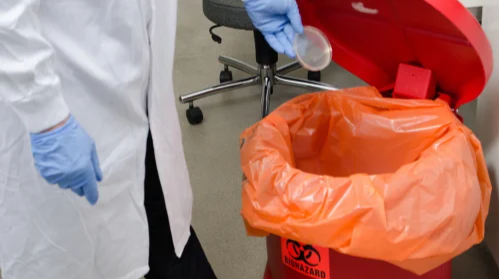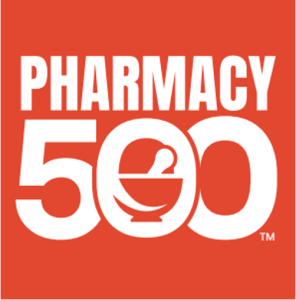Introduction
The incorrect management of pharmaceutical waste is becoming more and more popular among pharmacies and hospitals. This is not only a threat to employees in the workplace, but also to the surrounding environment and the increased infection risk it holds.
Your facility must have proper waste management guidelines in place to avoid any of the toxic properties poor disposal can lead to. In this article, we will closely examine pharmaceutical waste and how to manage it properly. We will start by reviewing what pharmaceutical waste is and then learn about the dangers of it, common mistakes pharmacy owners may make, and how to prevent and reduce the waste. Read on to learn more.
What is Pharmaceutical Waste
Pharmaceutical waste includes all drugs that can no longer be used due to being expired, unused, spilled, withdrawn, recalled, damaged, contaminated, or for any other reason. This also includes discarded items that are contaminated during their handling, like bottles, vials, gloves, masks, and boxes that contain pharmaceutical residue.
Pharmacy hazardous waste management involves seven steps; 1. waste collection; 2. Packaging; 3. storage; 4. Segregation; 5. Transport; 6. Treatment; and 7, disposal. This all needs to be done on a scientific basis and is an environmental and social obligation for pharmacy owners, requiring a proper plan.1
Pharmaceutical waste is either hazardous or non-hazardous. Furthermore, hazardous waste can be broken down into three categories which include listed pharmaceutical waste (RCRA), chemotherapy waste, and controlled substances. Listed waste is one of the hazardous waste lists by the Resource Conservation and Recovery Act (RCRA). There is a P, U, and D list that separates hazardous waste pharmaceuticals (P and U) and items that are not strictly pharmaceutical but have hazardous properties that make them flammable, corrosive, or highly reactive (D). Chemotherapy waste can be divided into bulk and trace. Bulk chemotherapy waste is any product that is waste and contains more than 3% by weight of the regulated ingredient. An example would be IV bags left over after treatment with chemotherapy or materials used to clean chemotherapy spillage. Trace chemotherapy waste is intact and unused Environmental Protection Agency listed chemotherapy waste that is less than 3% by weight of the ingredient or items that came into contact with chemotherapy like gloves or gowns. Lastly, controlled substance waste is any of the five scheduled controlled substances and these must be destroyed beyond reclamation under the supervision of two healthcare professionals. Incineration is a popular method used here.2
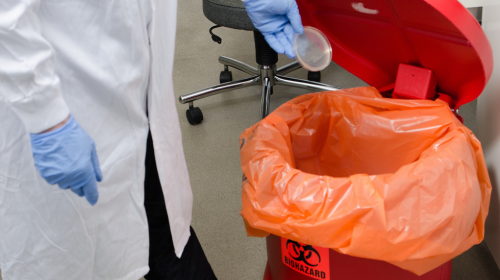
All healthcare services generate 3% of pharmaceutical waste and their disposal is alarming since they generate large quantities of waste and by-products. Their improper disposal of these medicines is exponentially increasing throughout the world, especially in developing countries posing serious health-related problems.1
The Dangers of Pharmaceutical Waste
Proper medical waste disposal is crucial to avoiding toxicities in the environment, humans, animals, aquatics, and so much more. Medical waste only takes up 2-3% of all waste but it is the most hazardous to outsiders. The two main human risks that pharmaceutical waste and by-products can lead to are infection transmission/epidemiological danger and injuries caused by sharp objects. WHO estimates that needlesticks with contaminated syringes result in millions of hepatitis B, hepatitis C, and HIV infections per year. Aside from sharp object incidents, the improper disposal of vaccine vials has caused children who came in contact with them to cause a smallpox outbreak and fatal events have occurred from poor disposal of radiation sources.3
Aside from the human risks, environmental hazards are also high since the waste contains compounds that are a hazard to a healthy environment. This includes aquatic hazards as well since pharmaceutical chemicals don’t get removed from the wastewater via the sewage system. This further affects animals and aquatic life, potentially bringing even more harm to human beings through food chains and direct contact with toxic water sources.
Due to the harmful nature of this type of waste, there are specific methods used to dispose of them and reduce the effects it may have. New methods are constantly being developed to replace the old ones and ensure the safety of humans and the environment.4
Common Pharmaceutical Waste Mistakes
When disposing of pharmaceutical waste, there are many common mistakes that pharmacy facilities make without even realizing it. Pharmacy waste disposal must be structured properly to avoid any and all contamination with outside sources to be considered successful. Common mistakes include mixing medical waste with other types of waste, multitasking, leaking liquids, treating sharps like other medical waste, opening medical waste containers, using your bare hands for handling, storing containers in unrefrigerated rooms, using unmodified vehicles for transport, allowing untrained personnel to handle them, and neglecting documentation.
Pharmaceutical waste should be segregated from other types of waste with the amount of waste generated predicted for the planning of waste management. This helps to avoid the mistake of mixing medical waste with other types of waste that is non-hazardous to the environment and humans.5
How to Prevent and Reduce Pharmaceutical Waste
Medical waste should always be disposed of and kept away from household waste. Specifically marking it in separate containers, using red trash bags, and keeping it away from other waste containers can help with this. Keeping the containers next to one another can cause accidental mixing. This should all be done with full attention. Texting, talking, eating, and other forms of multitasking is forbidden by law while disposing of medical waste. Because it contains very hazardous materials, handlers must not engage in other activities to prevent exposure.
A lot of medical waste is stored as liquid. This can include bodily fluids, dissolved medicines, laboratory reagents, intravenous solutions, and disinfectants. Liquid waste must be sealed in sturdy containers to keep the liquids from accidentally leaking or spraying while personnel handles, disposes, and transports the materials.
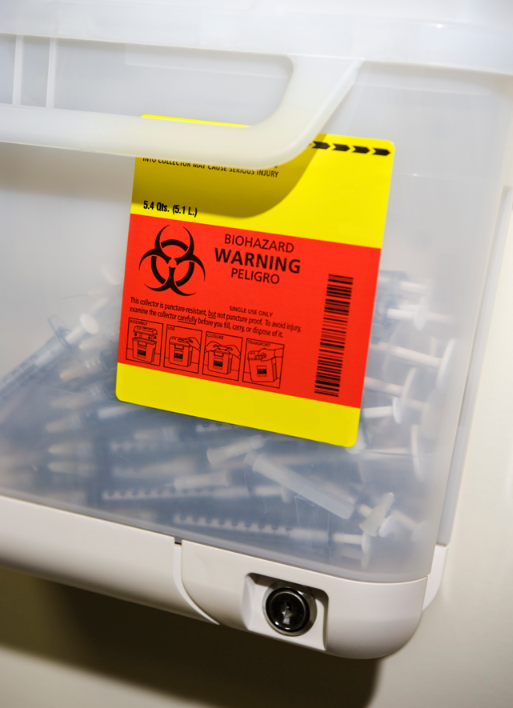
Sharps are another common form of pharmaceutical waste. These are disposed of differently. They cannot be thrown away the same way other medical waste is since they can lead to punctures, causing injury and risk of infection to handlers. These must be thrown away separately in specifically made sharps containers that are sturdy, narrow-mouthed, and sealable. Sharps should never be touched, bent, or broken before placing them in their designated containers.
Wearing proper personal protective equipment (PPE) is mandatory for anyone handling medical waste. Nitrile gloves, facemasks, goggles, and full-length gowns are required. This is only before disposal because after throwing something in a medical waste container, it should not be opened again. Opening closed waste containers can cause contamination and exposure to what is inside. Inspection of closed containers is not applicable for those that are already sealed.
OSHA bloodborne pathogens standard states that long-term storage of filled medical waste containers must be refrigerated to prevent decay since it can attract vermin. Medical waste must be stored in refrigerated rooms that are specifically designed as a staging area for hazardous waste. Food or other non-medical waste must not be stored in the same refrigerated space. Once the waste is ready for transport, it must be picked up by waste consulting services that have an enclosed and sealed compartment for waste along with an impermeable lining to prevent unintentional leaks.
As far as the handling personnel goes, only persons trained in medical waste management should be handling and disposing of hazardous waste. The trained collectors gather and process waste in a way that minimizes the chance of leakage, contamination, and exposure to toxicities. Professional medical waste collectors go through specific schooling and certification to ensure collection and disposal are done safely with as little impact on the environment as possible. Once the trained handlers dispose of, collect, and transport the waste, they must document and track what they have done. The waste must have tracking documents at all times with information including the quantity of the waste, the date it was transported, and the name of the registered individual transporting the waste. This enforces accountability in the process from collection to disposal.5
Conclusion
Pharmaceutical waste management is becoming a huge issue globally affecting humans and the surrounding environment. Pharmacies worldwide need to have strict plans in place with guidelines on the correct disposal of these hazardous materials to ensure this problem is not progressing and harm outsiders.
Knowing what classifies as hazardous waste, how to reduce and prevent the risk of pharmaceutical dangers, and the common mistakes that facilities make can help curate a proper plan in your pharmacy. Learn more about pharmaceutical waste management through our virtual trade show.6




